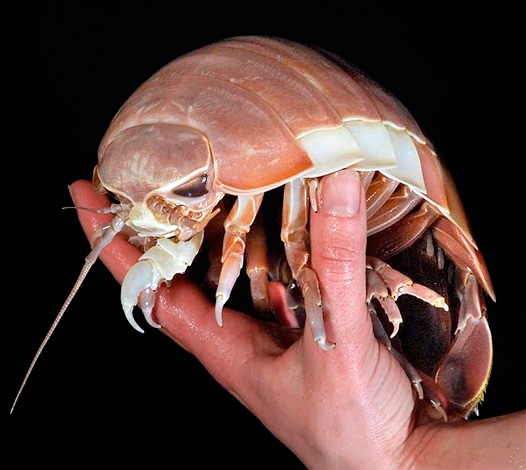
News of the capture of more and more large specimens of woodlice has recently been constantly pleasing to the scientific community. And when information often began to slip in messages that the sizes of these creatures sometimes exceed half a meter, such giant woodlice began to attract the attention of ordinary people: it’s no joke, because a huge woodlice, whose body length reaches 75 cm, is a real sensation.
However, an important nuance is that, in reality, giant wood lice are not at all the wood lice that are familiar to everyone, living under snags and fallen leaves in close proximity to the ground. These large creatures are deep sea creatures: like land lice, they belong to the order of decapods and have an appearance very reminiscent of that of wood lice proper.
The specificity of the "real" (small) woodlice lies precisely in their land, while the huge woodlice, which are caught at great depths by trawlers, evolved from marine crayfish, and none of their ancestors saw land.
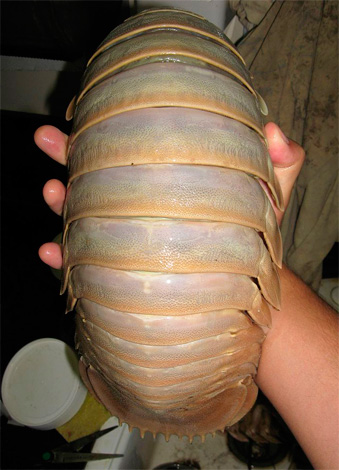

On a note
However, certain types of "real" wood lice also successfully inhabit water bodies.However, this happens only because these creatures, although they live in water, have a land ancestor - they are secondary water.
Generally speaking, huge deep-sea woodlice are more correctly called giant isopods. However, further we will simply call them giant woodlice, since this name is more familiar to most readers.
So, giant wood lice are a whole genus of crustaceans, in which today there are 9 species. The largest woodlouse in the world is the giant isopod Bathynomus giganteus, the largest specimen of which was 76 cm long and weighed 1.7 kg. Basically, woodlice caught in deep-sea nets have a length of 15 to 40 cm.

The giant isopod was discovered by the Frenchman Alphonse Edwards, who caught several young males in the Gulf of Mexico in 1979. For a long time it was believed that giant woodlice live only in the Atlantic Ocean and its seas, but recent studies off the coast of Australia have shown that these crustaceans also live in the Pacific and Indian Oceans, differing little from each other in appearance and lifestyle.

It is interesting
Huge woodlice were the first deep-sea creatures that zoologists could find. For science, this was a real revolution: before that, it was believed that the great depths of the ocean were lifeless. Isopods, on the other hand, gave impetus to the study of deep-sea areas of the continental shelf and depressions in the oceans, and also expanded scientists' understanding of the possibilities for adapting living beings to extreme living conditions.
What does the largest woodlice in the world look like?
Outwardly, the large woodlice strongly resembles its ordinary land relatives, sometimes called "watermelons" by the people.
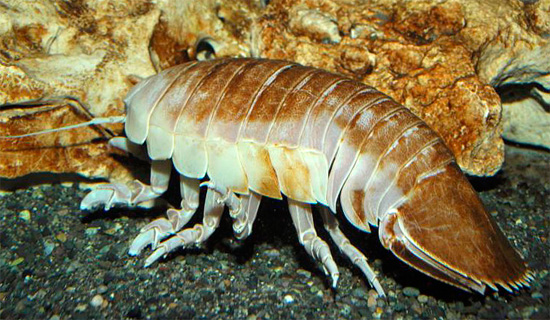
However, the structure of her giant body has its own distinctive features:
- The pronounced difference between isopods and small land relatives is the presence of a wide and long "tail" of several blades, which provides the ability to swim over short distances. Land lice do not have such a tail, but ordinary crayfish have one.
- The paws of giant woodlice are armed with powerful claws, which, however, are not used for attack or defense. They are needed more for ease of movement on a clay or muddy bottom.
- Interestingly, giant woodlice have large eyes and good eyesight. It is not entirely clear why they need it at the depths at which they live, but the fact remains that they see giant isopods well.
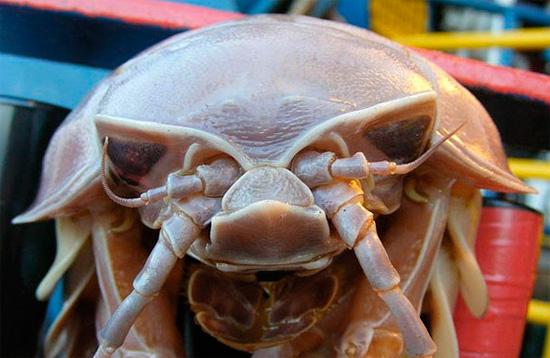
In addition, a large woodlice (as well as small land lice) in case of danger can curl up into a ball, after which all soft and accessible areas of its abdomen for predators are protected by powerful exoskeleton plates.
Lifestyle and nutrition
The world's largest woodlice live at depths of 170 to 2000 meters. The greatest depth of their capture is 2140 meters.
These creatures prefer to settle on muddy or clay soils, and avoid rocks and rock outcrops.
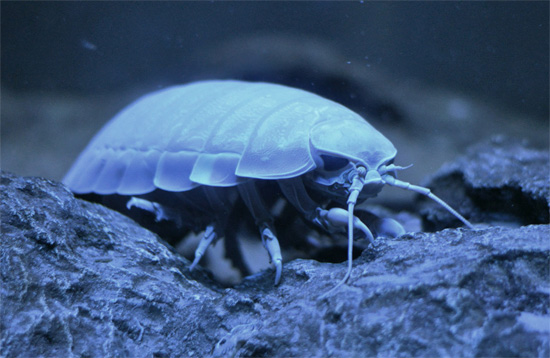
Giant woodlice are solitary in their way of life, and only occasionally meet each other for mating. They do not show obvious hostility to individuals of their own species, but they do not stick together either.
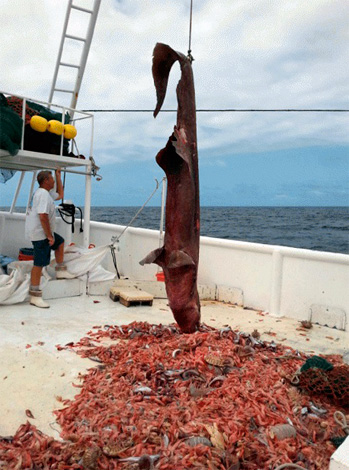
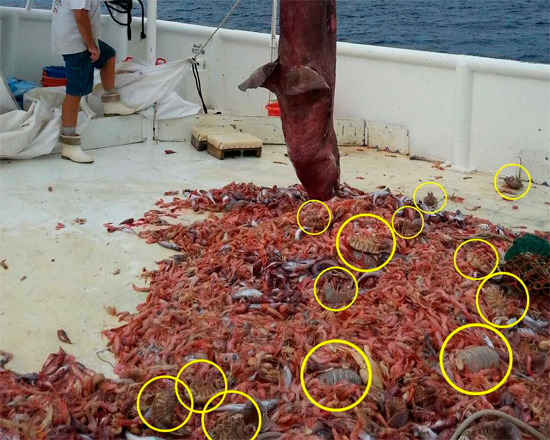
Giant isopods can rightfully be called scavengers of the deep seabed: their main food is the remains of dead worms, fish, mollusks, crayfish, algae and almost any other organic matter.If a woodlice in search of food comes across a colony of motionless underwater animals - sponges, radiolarians, holothurians - she, without embarrassment, eats them too. Some experts believe that at great depths, isopods can catch even small, sedentary fish.
Considering the extreme sparseness of the deep-sea bottom areas and the small amount of food available here, it becomes clear why isopods are accustomed to prolonged hunger strikes. So, for example, in the experiment, these creatures, placed in aquariums, "fasted" for 8 weeks without harm to themselves.
It is interesting
If a woodlice comes across, for example, a colony of holothurians, it can overeat so that it practically loses the ability to move.
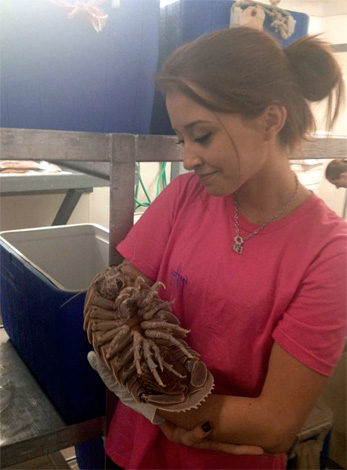
Features of reproduction of giant isopods
Giant wood lice breed in spring and winter. This is due to the fact that in the summer months the amount of food at great depths is significantly reduced.
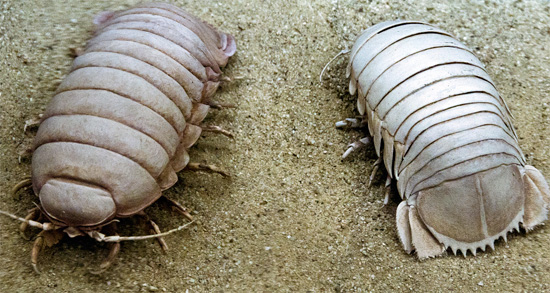
After mating, a special brood pouch appears on the abdomen of the female isopod, into which eggs enter from the oviduct, are fixed there, and subsequently develop. Young woodlice leave the mother's pouch almost fully formed and differ from adults only in size.
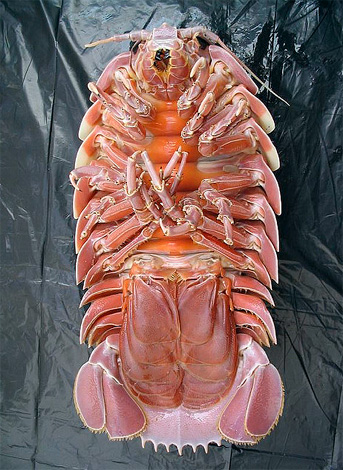
Juveniles can live at the same depth as adults.
It is interesting
The female does not show any concern for the young hatching from the eggs. For some time, the larvae simply stay near the mother, and if they are born in a place with an abundance of food, they can linger on it for several days. But already from a very young age, isopods are left to their own devices and lead a completely independent lifestyle.
Why are they so big?
Scientists still cannot unequivocally state what is the reason for the large size of deep-sea woodlice.One hypothesis states that due to the scarcity of food supplies at great depths, animals here reach sexual maturity much later, and before that moment they have time to grow to large sizes.
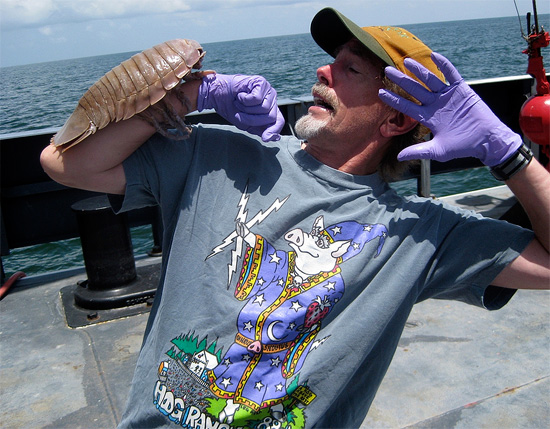
According to another theory, the larger the body size of sea creatures, the easier it is for them to endure low ambient temperature and high pressure. This is very similar to the tendency of land animals to grow larger when settling north - it is near the poles that the largest predators, pinnipeds and some representatives of bird orders are found.
Other large wood lice
So to speak, there are no "analogues" in size to giant isopods among land true woodlice. The largest species of land woodlice live in the tropics and only in exceptional cases grow to a size of 4-5 cm in length, while their usual sizes are 1-2 cm.
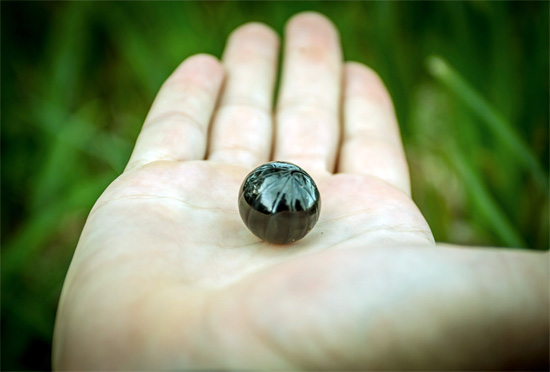
This is partly due to the fact that, like all crustaceans, woodlice are in great need of moisture, and their large size would lead to an increased risk of death from dehydration even in fairly humid places (the larger the body size, the greater the area of evaporation of water from it) . In addition, all wood lice are a favorite food for a wide variety of animals, and if small representatives of this suborder can at least hide under stones, then large ones will simply be defenseless against enemies.
On a note
An unprepared person can easily confuse wood lice and centipedes from the glomeris family. While the body of woodlice is divided into 11 segments, with the posterior ones being small, glomeris have 12-13 segments, of which the posterior segment, similar to a shield, is especially large.
Here are some photos of centipedes from the glomeris family (not to be confused with wood lice!):


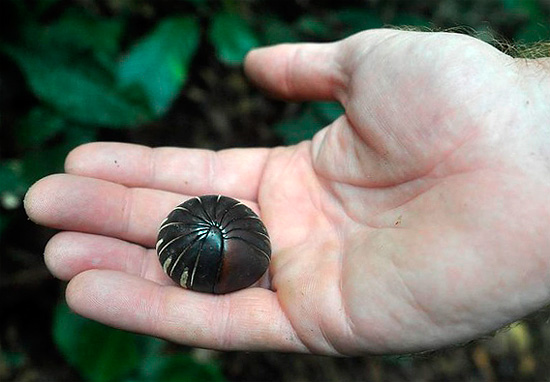
Interestingly, the largest of the true wood lice are again marine species. Ligia oceanica, for example, grows up to 3 cm long and inhabits the shallow waters of the Mediterranean and North Atlantic. Unlike giant isopods, Ligia oceanica evolved from terrestrial ancestors, and therefore can rightly be called a real wood lice.
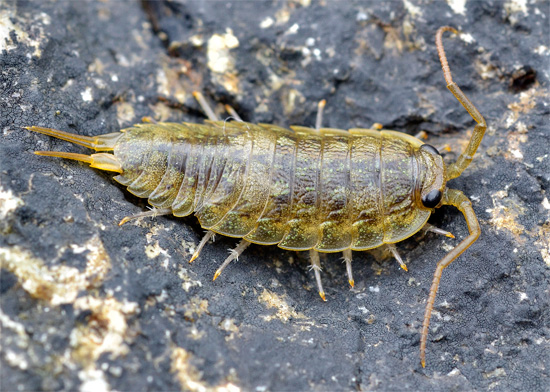
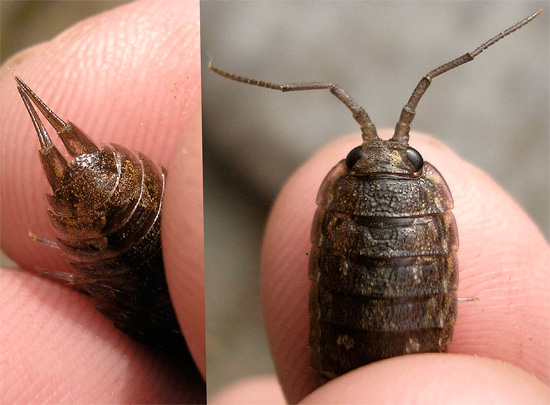
It should be noted that no woodlice - even the largest in the world - are of commercial value. Extreme lovers of everything to try say that the land louse tastes like concentrated urine. Against its background, giant isopods can be considered a delicacy: their meat tastes like lobster meat.
However, given the extremely rare and accidental hits in fishing nets, no one is seriously engaged in the extraction and preparation of giant isopods.
An interesting video with a brief fragment from the life of a giant woodlice


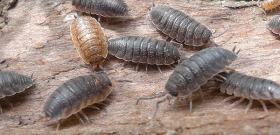

Evolution was mentioned in vain. Firstly, there is still no direct evidence, not that the origin of one species from another, but even the theory of evolution itself, and never will be. Because Darwinism is a disinformation directed at politics. Therefore, where these wood lice came from, whether they are someone's descendants or not, is all a separate question. Can you imagine? One said, the second repeated, then you see, they already write in textbooks.
Well, you're completely...
Strange person...
I have only one question: is it possible to keep these amazing creatures in the house?
Of course you can, if the conditions are right ... Ha ha ha ))
And I liked (insects). Well, not insects, but arthropod crustaceans. And in the second video, he makes a scarecrow (souvenir) and shows how to make it himself.